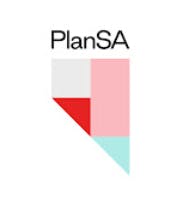Kangaroo Island Regional Plan
Consultation has concluded
Click here to provide feedback via the Kangaroo Island Regional Plan Survey
Have your say on the Kangaroo Island Regional Plan
What's being decided?
The State Planning Commission (the Commission) have released the draft Kangaroo Island Regional Plan (KIPR) for a 12-week public consultation period and want to hear from community, councils and industry on how we prepare for future growth.
To support the launch of the KIRP, Planning and Land Use Services (PLUS) has developed Australia’s first 100% digital, dynamic, and interactive Regional Planning Portal.
The KIRP is the first of seven new regional plans for South Australia, to be developed in the innovative platform. It will allow for real-time updates which will ensure the plan remains contemporary and provides users easy access to the regional plans via the accessible interface.
Background
The KIRP addresses key priorities for the region, such as preserving the island's pristine natural environment, promoting economic prosperity and ensuring there is enough housing. The KIRP is a visionary 30-year roadmap for Kangaroo Island, aimed at fostering a resilient, prosperous, healthy, and connected future for the island’s communities. Climate change mitigation, convenient transport infrastructure, and diverse housing options will be integral to achieving this vision of sustainable growth and community well-being. The KIRP delivers on these key outcomes.
The KIRP maps out the South Australian government’s long-term vision for sustainable growth across the state and plays a significant role in identifying appropriate land for future housing, employment, commercial uses, and the necessary supporting infrastructure.
Key highlights in the Kangaroo Island Regional Plan include:
- Population growth projections estimate 6,876 residents by 2054.
- The need to address housing challenges, including seasonal worker accommodation.
- Emphasis on sustainable growth that is resilient to natural disasters such as bushfires, and the protection of primary production land by focusing residential development in the established towns of Kingscote, Parndana, American River and Emu Bay.
- Kingscote, Penneshaw, and American River are identified as key employment and service centres.
- Climate change considerations are integrated into planning to safeguard against natural hazards.
- Infrastructure improvements across the island, including transport connectivity, are prioritised.
Get involved
Find out more:
- review the Kangaroo Island Regional Plan
- read the Kangaroo Island Regional Plan engagement plan
- read the Kangaroo Island Regional Plan factsheet.
Have your say by:
- taking our survey
- providing a written submission
- emailing a submission to: plansasubmissions@sa.gov.au
(Subject: Submission – Kangaroo Island Regional Plan) - posting a written submission to:
Attention: Regional Planning Program Team, Planning and Land Use Services Department for Trade and Investment
GPO Box 1815, Adelaide SA 5001 - registering for an upcoming Community Drop In Session.
What are the next steps?
All feedback received during the 12-week consultation period will be reviewed and considered for inclusion in the draft KIRP, before final amendments are made ahead of the plan’s formal endorsement and adoption in late 2024.
To view the regional planning portal and for more information about the Kangaroo Island Regional Plan, visit https://regional.plan.sa.gov.au.




